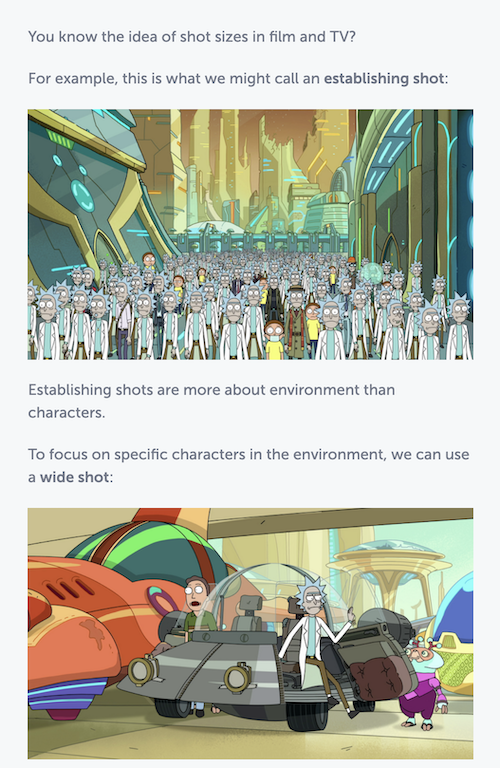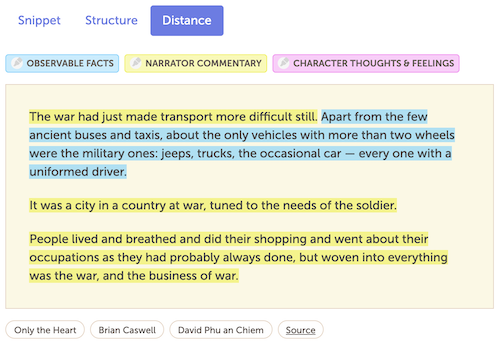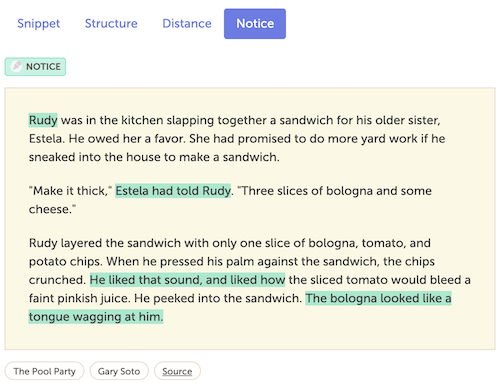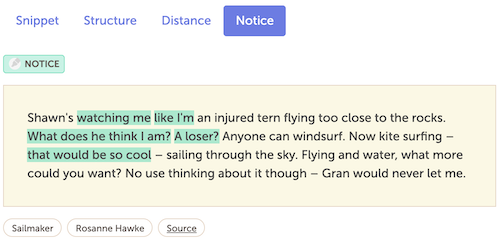Happy new year?
Right now we're thinking daily about massive disjunctions in scale—from microbial to global—so it's as good a time as any to publish a lesson about Narrative Distance.
The five levels 🏙 👨👩👧👦 🙆♀️ 😅 💭
This is a tight little lesson because it's based on a concept that John Gardner articulated back in the 80s, in The Art of Fiction, which he called psychic distance but has since transmuted into narrative distance—possibly because the 80s was also full of TV psychics and everyone got confused.
Anyway, Gardner was describing the way in which writers can modulate the distance between the reader and a character's thoughts and feelings.
He described five levels of distance, which he didn't label but which we've called bird's eye, wide, mid, close, and internal.
In this lesson we introduce the concept first through shot sizes in film and TV:
After this we introduce Gardner's scheme, then work through examples of each level.
For example, Bird's Eye:
And internal:
Finally, for a checkpoint piece, we ask students to write a short piece that transitions between two or more narrative levels.
And that's it!
It's a tight lesson about a foundational concept in narrative writing.
- It dovetails with the concept of point of view because it requires an understanding of the relationship between narrator, reader, and character.
- It overlaps with the lessons about emotions because different representational devices are available at different distances.
- But you can do any of these lessons in any order!
You can preview the Narrative Distance lesson here.
WHAT'S NEXT?
- Next in the informational writing series will be Layers & Lenses, a companion to the Lists & Hierarchies lesson.
- Next in narrative skills will be either Scene & Summary or something about surprising points of view.
- And the Complex Sentences lesson is still coming: that one has been a challenge.
- And we have a big Frankenstories update coming very soon. 😳




